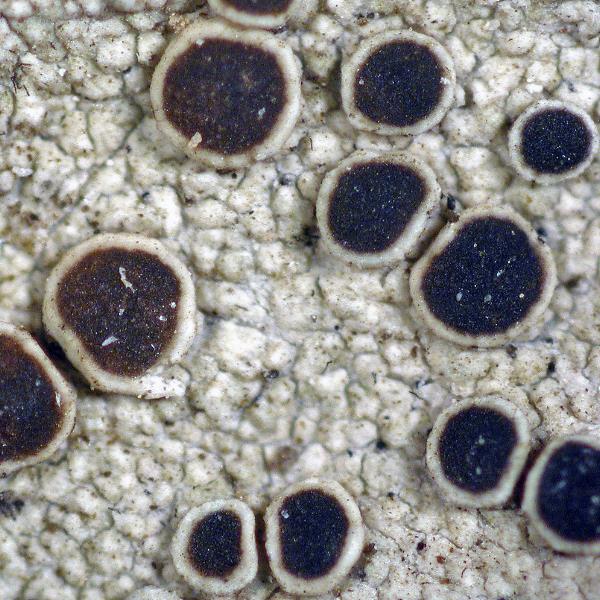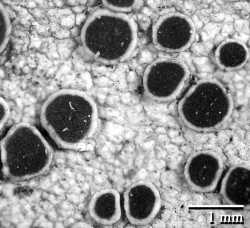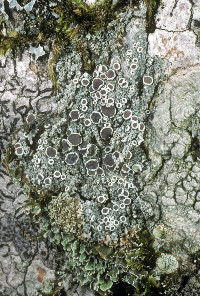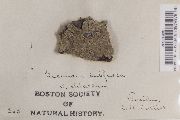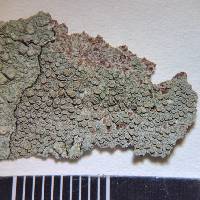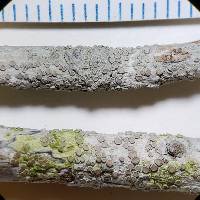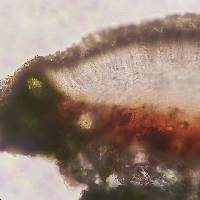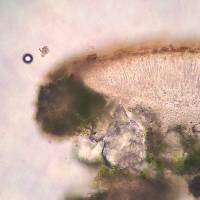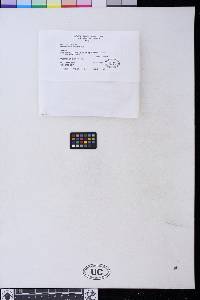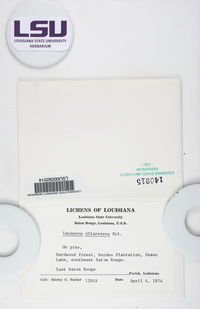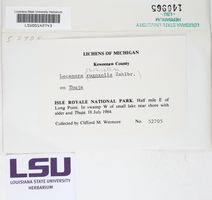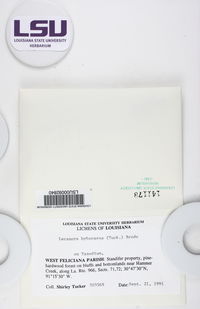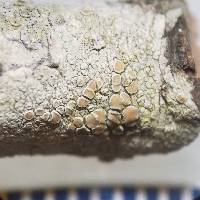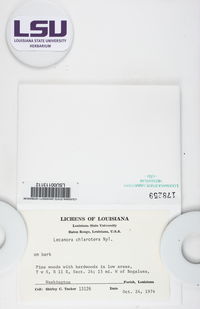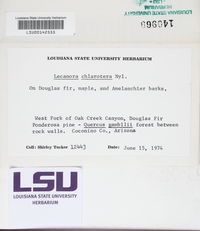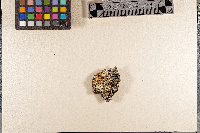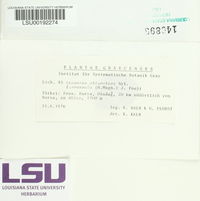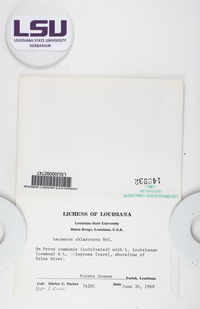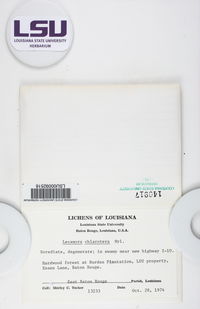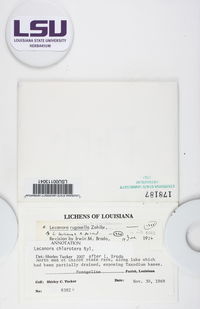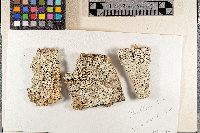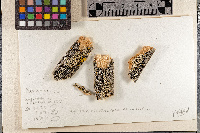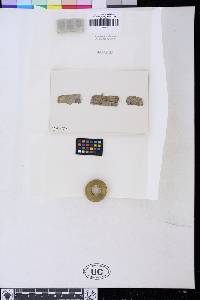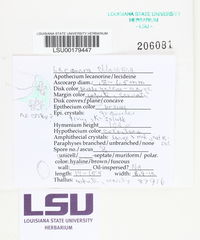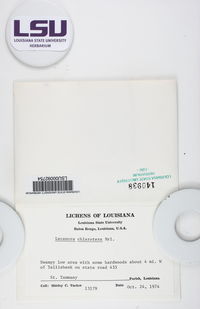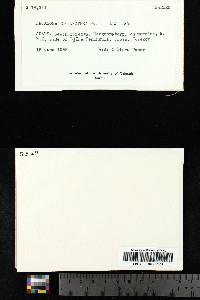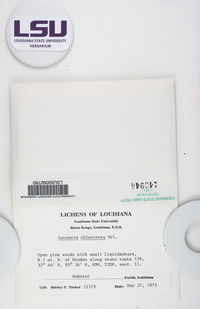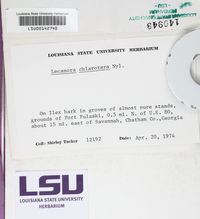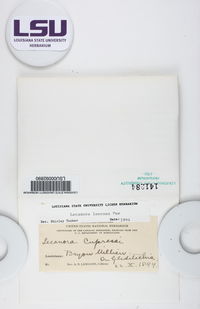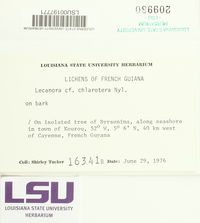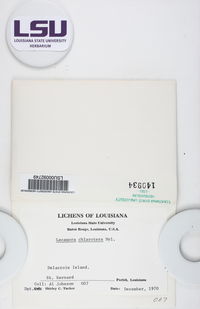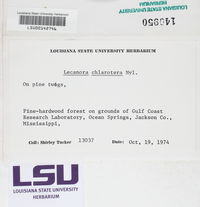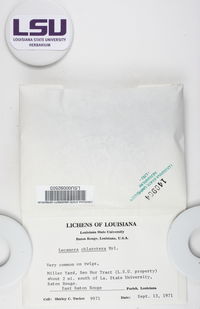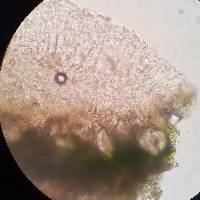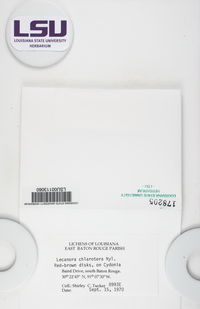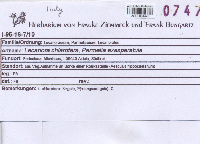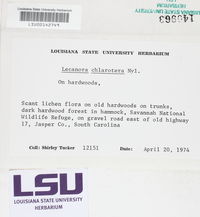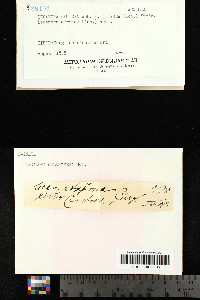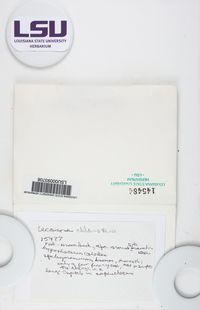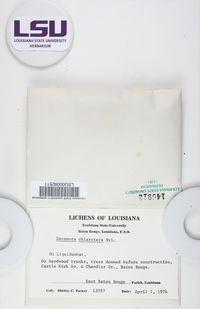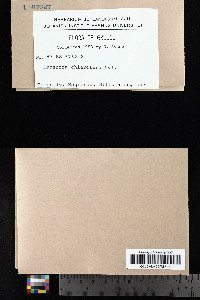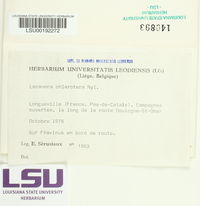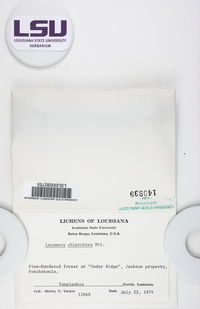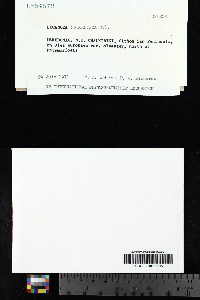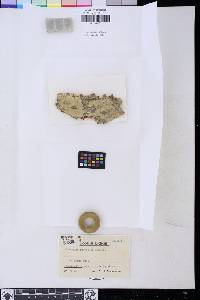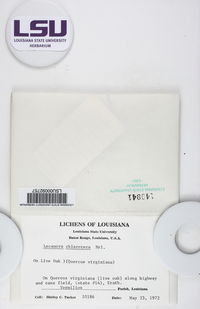
Consortium of Lichen Herbaria
- building a Global Consortium of Bryophytes and Lichens as keystones of cryptobiotic communities -
- Home
- Search
- Images
- Species Checklists
- US States: O-Z >
- US National Parks
- Central America
- South America
- US National Parks
- Southern Subpolar Region
|
|
|
|
Family: Lecanoraceae
[Lecanora chlarotera f. crassula (H. Magn.) Poelt, moreLecanora crassula H. Magn., Lecanora distincta var. chlarona Ach., Lecanora subfusca var. chlarona (Ach.) Ach.] |
Nash, T.H., Ryan, B.D., Gries, C., Bungartz, F., (eds.) 2004. Lichen Flora of the Greater Sonoran Desert Region. Vol 2. Thallus: crustose, continuous or rimose-areolate or verrucose-areolate; prothallus: not visible areoles: flat or verruculose, thin or thick, opaque, ecorticate surface: yellowish white to yellowish gray or whitish gray to gray or pale green to greenish white, smooth or rough, epruinose, with an indistinct margin, esorediate Apothecia: sessile, 0.4-0.8 mm in diam., lecanorine disc: red-brown or orange-brown, plane, epruinose margin: concolorous with thallus, thin or thick, persistent, even, entire or flexuose, smooth, entire or verrucose or verruculose, without a parathecia crown amphithecium: present, with numerous algal cells, with large crystals insoluble in K, corticate; cortex: present, hyaline, distinct, basally thickened, gelatinous or interspersed, (15-)20-25(-30) µm thick laterally, 25-40 µm thick basally parathecium: hyaline, containing crystals soluble in K epihymenium: red-brown to orange-brown, with pigment dissolving in K, with crystals dissolving in K hymenium: hyaline, clear; paraphyses: thickened (up to 4 µm wide) apically, not pigmented; subhymenium: hyaline, 15-20 µm thick; hypothecium: hyaline, without oil droplets asci: clavate, 8-spored ascospores: hyaline, simple, ellipsoid or broadly ellipsoid, (9.5-)13.5-15(-15.5) x (5.5-)6-7(-7.5) µm; wall less than 1 µm thick Pycnidia: immersed, cerebriform or ovoid; conidiophores: type II sensu Vobis conidia: filiform Spot tests: K+ yellow, C-, KC-, P- or P+ yellow, or P+ pale orange to red Secondary metabolites: atranorin (major), chloroatranorin (minor), gangaleoidin (major), nephrosteranic acid (major or absent), and norgangaleoidin (minor). Substrate and ecology: on bark of deciduous trees World distribution: a subcosmpolitan species occurring in Africa, Asia, Europe, and North and South America Sonoran distribution: montane areas of Arizona, coastal mountains of southern California,Baja California, and Chihuahua. Notes: Lecanora chlarotera is treated here as circumscription used by Guderley (1999), which differs slightly from that of Brodo (1984). In our circumscription, Lecanora chlarotera includes specimens with sessile apothecia with large amphithecial crystals, a granular epiphymenium, and the presence of the gangaleoidin chemosyndrome. In Brodo's (1984) circumscription specimens lacking gangaleoidin were also included under this name. However, such morphologically indistinguishable specimens lacking gangaleoidin were not present in the study area. Lecanora chlarotera is similar to L. viruduloflava, which differs in having heavily pruinose apothecial discs. Brodo (1984) regards L. rugosella Zahlbr. as a distinct species (see p. 155) and lists specimens of both L. chlarotera and L. rugosella from the Sonoran region. |
|
|
|
Powered by Symbiota

